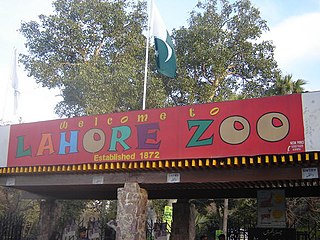
Lahore Zoo in Lahore, Punjab, Pakistan, established in 1872, one of the largest zoos in Pakistan. It is currently managed by the Forest, Wildlife and Fisheries department of the Government of Pakistan. Today the zoo houses a collection of about 1378 animals of 135 species. Lahore Zoo was the host of the fifth annual conference of SAZARC in 2004.

Dachigam National Park is a national park located, 22 kilometres (14 mi) from Srinagar city in Srinagar district of in the Indian-administered Kashmir on the east side of Dal Lake. It covers an area of about 141 square kilometres (54 sq mi). The name of the park literally stands for "ten villages" which is in the memory of the ten villages that were relocated for its formation. These ten villages were living in this region before the World War I in the beginning of 20th century. The main gate entrance is very close to the New Theed general bus stand on the either side of Darul Uloom Kousaria.

Buxa Tiger Reserve is a tiger reserve and national park in northern West Bengal, India, covering an area of 760 km2 (290 sq mi). In altitude, it ranges from 60 m (200 ft) in the Gangetic Plains to 1,750 m (5,740 ft) bordering the Himalayas in the north. At least 284 bird species inhabit the reserve. Mammals present include Asian elephant, gaur, Sambar deer, clouded leopard, Indian leopard, and Asian golden cat.

Dibru-Saikhowa National Park is a national park located in Dibrugarh and Tinsukia districts, Assam, India. It was designated a Biosphere Reserve in July 1997 with an area of 765 km2 (295 sq mi), including a core area of 340 km2 (130 sq mi) and a buffer zone of 425 km2 (164 sq mi).

Margalla Hills National Park is a national park in Pakistan located in Islamabad Capital Territory, near its northern boundary with Haripur District, Khyber Pakhtunkhwa. The park includes the Margalla Hills, which form the foothills of the Himalayas, along with Shakarparian Park and Rawal Lake.

Ladakh is the home to endemic Himalayan wildlife, such as the bharal, yak, Himalayan brown bear, Himalayan wolf and the iconic snow leopard. Hemis National Park, Changthang Cold Desert Wildlife Sanctuary, and Karakorum Wildlife Sanctuary are protected wildlife areas of Ladakh. The Mountain Institute, the Ladakh Ecological Development Group and the Snow Leopard Conservancy work on ecotourism in rural Ladakh. For such an elevated, arid area, Ladakh has great diversity of birds — 318 species have been recorded. Many of these birds reside at or seasonally breed in high-altitude wetlands, such as Tso Moriri, or near rivers and water sources.
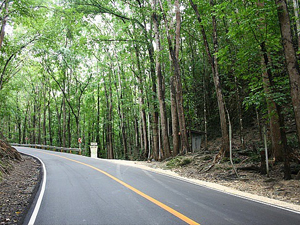
The Changa Manga is a planted forest which includes a wildlife preserve, in the Kasur and Lahore districts of Punjab, Pakistan. It is located approximately 80 kilometers south-west of Lahore. It was once the largest man-made forest in the world but has undergone illegal deforestation at a massive scale in recent times.

Jallo Park, established in 1978, is a public recreation and wildlife site located in Lahore District, Punjab, Pakistan. Spread over an area of 461 acres (187 ha), it is one of the three main wildlife parks located in Lahore, the other two being Changa Manga and Lahore Zoo Safari. The park is 7 kilometres (4.3 mi) east to Lahore city. Facilities at Jallo Park include a Forest Research Centre, Wildlife Breeding Center, restaurants, coffee shops, a theme park, a sports complex, swimming pool, and a large lake for fishing and boating. It is currently funded by Punjab Wildlife and Parks Department of Government of Punjab. It is easily accessible by taxi, TransLahore buses and Lahore City Commuter trains that stop at Jallo Railway Station. Now the area of 100 acre is allotted to the Parks and Horticulture Authority Lahore by govt of Punjab there PHA established Botanical Garden Jallo and Butterfly House facility for the public.

The Sita Mata Wildlife Sanctuary is a wildlife sanctuary situated in Pratapgarh and Chittaurgarh districts of Rajasthan Rajasthan, India, declared as a protected forest area by the Government of Rajasthan Notification No. F 11 (9) Revenue/8/79, dated 2/11/1979. It is a dense forest, with an area of 422.95 square kilometers, which is about 40% of the total land area of the district. The land is undulating because of the confluence of three different formations — Malwa Plateau, the Vindhyachal Hills and Aravali mountain ranges.
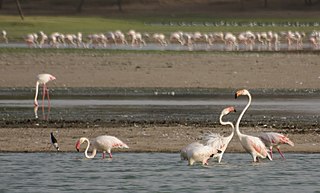
Thol Lake is an artificial lake near Thol village in Kadi in Mehsana District in the Indian state of Gujarat. A fresh water lake surrounded by marshes, it was built as an irrigation tank in 1912. Declared the Thol Bird Sanctuary in 1988, it is a habitat to 150 species of birds, about 60% of them waterbirds. Many migratory birds nest and breed in the lake and its periphery. The two most prominent species of birds recorded in the sanctuary are flamingoes and sarus crane. The sanctuary is also proposed to be declared an Eco-Sensitive Zone, conforming to the Environment (Protection) Act, 1986, for which draft notification has been prepared.

Nauradehi Wildlife Sanctuary, covering about 1,197 km2 (462 sq mi), is the largest wildlife sanctuary of Madhya Pradesh state in India. This wildlife sanctuary is a part of 5500 km2 of forested landscape. It is located in the centre of the state covering parts of Sagar, Damoh, Narsinghpur, and Raisen Districts. It is about 90 km from Jabalpur and about 56 km from Sagar.
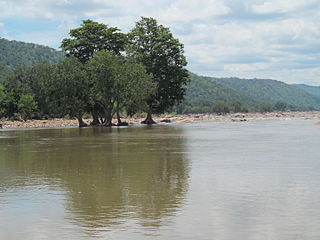
The Cauvery Wildlife Sanctuary is a protected area located in the Mandya, Chamarajanagar and Ramanagar districts of Karnataka, India. The Cauvery River passes through its midst. An area of 510.52 km2 (197.11 sq mi) was established as Cauvery Wildlife Sanctuary on 14 January 1987 under Section 18 of the Wildlife Protection Act 1972 with the objective of providing protection, conservation and development of Wildlife and its environment. The sanctuary was expanded to its current area of 102,753 hectares in 2013. On its east, it adjoins Dharmapuri forest division of Tamil Nadu state.
Govind Pashu Vihar National Park and Wildlife Sanctuary is a national park in Supin Range, near Uttarkashi town in the district and state of the same name in India. It was established initially as a wildlife sanctuary in 1955, and was later converted into a national park. It is named after prominent Indian freedom fighter and politician Govind Ballabh Pant, who became Home Minister in 1955 and is credited for establishing Hindi as an official language of India.

The Deer Park, Hisar, on Hisar-Dhansu in Hisar city of Haryana state in India has an area of 19 hectares including a 6-acre plot for producing fodder for the deer. Park as 4 species, blackbuck, chital spotted deer and 6 sambar. It also doubles up as the wildlife rescue clinic for the treatment injured wild animals and birds brought here by the people, which are released back in to the wild after the recovery.
The Ch. Devi Lal Rudraksh Vatika Herbal Nature Park, in short Rudraksh Vatika, is a 184 acre forested wildlife area, wetland and herbal park for the conservation of biodiversity of over 400 endangered ayurvedic medicinal herbs in Shivalik foothills of Himalayas. It is located on the western bank of Western Yamuna Canal, 1.3 km east of NH-907, in Chuharpur Kalan village of Yamunanagar district of Haryana state in India.
Kamla Nehru Prani Sangrahalaya or Indore Zoo is a zoological garden located in Navlakha, Indore is managed by Indore Municipal Corporation. Indore zoo is the only zoo to deploy online booking, animal-health app, and touchless entry system that is tightly integrated with e-Nagarpalika, making it the most advanced zoo of India.
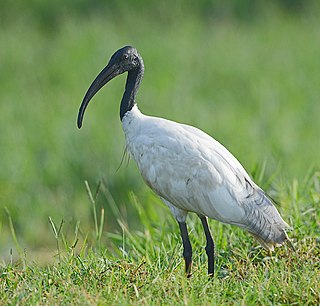
Basai wetland, located in Basai village in Gurgaon tehsil in Gurgaon district in Haryana, India, is a flora and fauna rich water body. It is recognised as one of India's Important Bird and Biodiversity Areas and is of global conservation significance as it supports populations of several endangered, vulnerable, and threatened bird species. Basai wetlandis recognised globally as an Important Bird Area (IBA) by the BirdLife International housing 20,000 birds of over 280 species including migratory birds and endangered birds, has not yet been declared a protected wetland by the Government of Haryana.



















